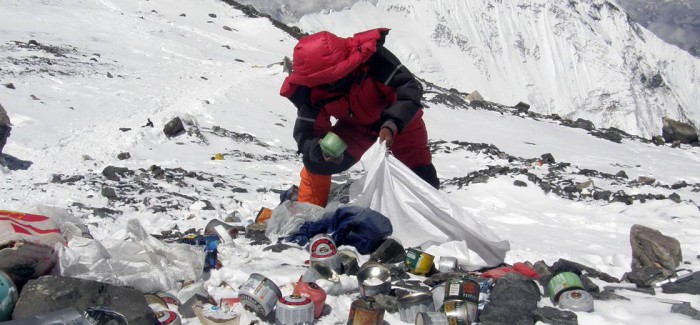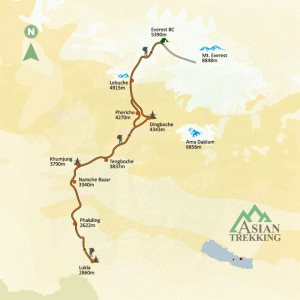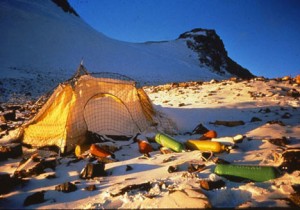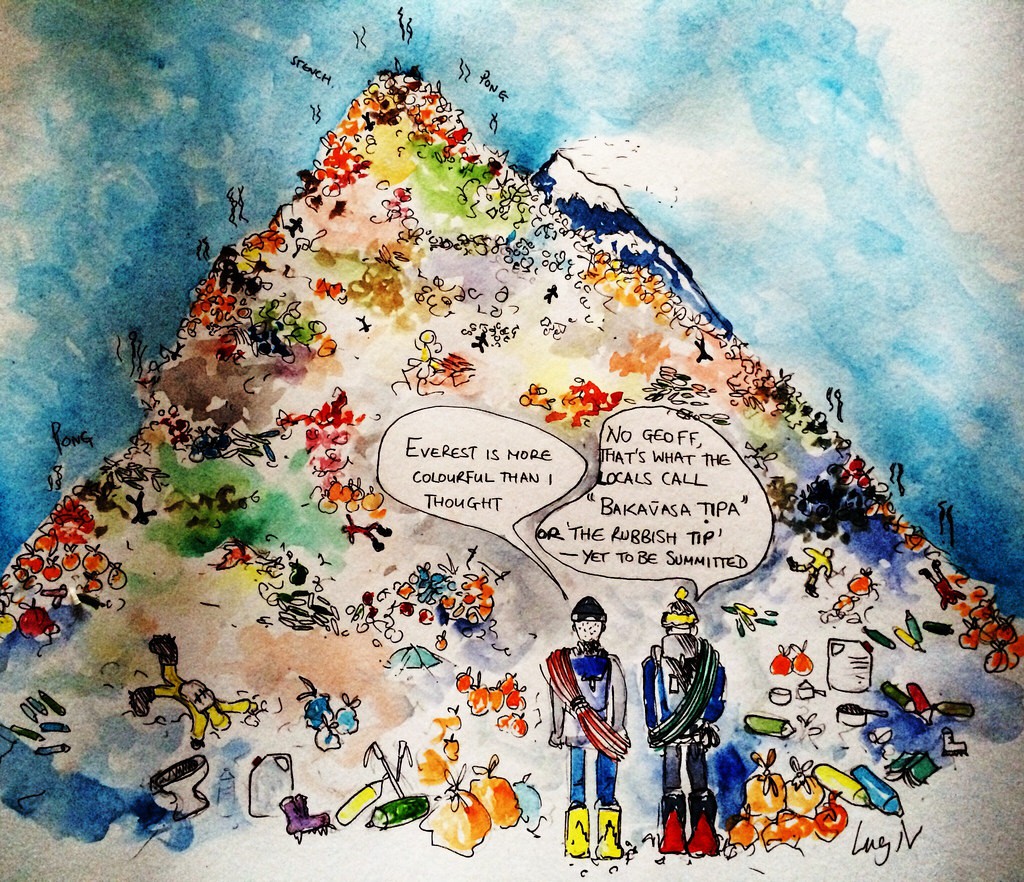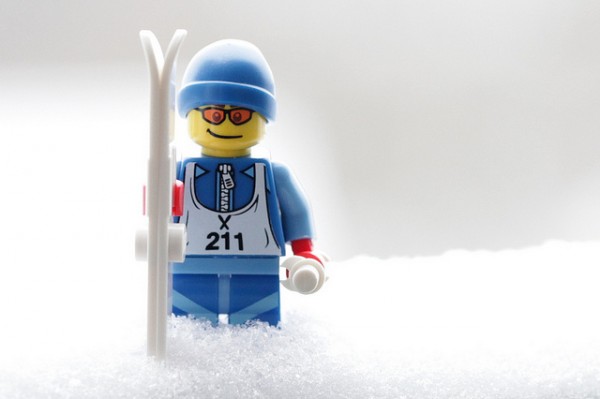Cleaning up Everest
There’s one foot of fresh snow at Everest Basecamp today and, as climbing teams get ready for the brief summit window later this month, we focus on one company who are leading the mission to clean up Everest with their unique Eco Everest Expeditions.
The Everest climbing season is going according to plan, even though trekking numbers are down 40% this spring, with all climbing groups now established at Base Camp as the summit window draws near.
Teams are currently completing their acclimatization rotations (some as high as Camp 3 on the south, and the North Col, on the north) and Sherpas are ferrying oxygen and supplies, and putting ropes up to the North and South cols and soon (possibly by tomorrow) to the summits.
Everyone is now awaiting the period of calm winds which define the summit window. It is expected to begin around May 11. According to climber Alan Arnette: “Only the overly eager will push to the summit at that time as it is still extremely cold near 9000m and frostbite risks are real. Waiting another week is not a big deal. With the good overall weather, there should be – should be – a long series of suitable weather windows this year, thus crowding should not be an issue.”
There are fewer big international companies but more local companies than last year, and so FamilySkiNews is following Asian Trekking, a company based in Kathmandu, founded by Ang Tshering Sherpa in 1982 and managed by his son, Dawa Steven Sherpa.
Since 2008, Asian Trekking has led a series of Eco Everest Expeditions. Their focus is on climbing the world’s highest peak in an eco-sensitive manner – bringing old debris down to base camp for disposal, in addition to their own garbage produced on the mountain, and all their human waste.
They sometimes find bodies on the mountain, when the ice melts due to global warming. They’ve taken five bodies down from the glacier and buried them.
Everest was once known as the world’s highest rubbish tip. The waste from the many climbers and guides who attempt to scale the mountain became a health hazard in recent years. But the situation has improved. Eco Everest Expeditions have brought down more than 15 tonnes of rubbish left by previous expeditions to date.
Human waste is a real problem. Climbers spend weeks acclimatizing at the various camps between base camp at 5,300m (17,380ft) and the 8,848m-high (29,028ft) summit. The camps have tents and some essential equipment and supplies, but they don’t have toilets. An increasing number of climbers carry disposable toilet bags, but most climbers simply dig a hole in the snow for their toilet and leave the waste there. This is a major health hazard for two main reasons: the climbers drink water from melted ice; and the waste ultimately flows downstream to villages as well.
All expedition teams are supposed to return their rubbish, following new legislation made in 2015. They now pay a $4,000 refundable deposit to the local government which is returned after their ascent, but the amount of rubbish they return is rarely verified. To encourage best practice, Eco Everest Expeditions invite Sherpas from all camps to bring them their rubbish in a project called “cash for trash” – they receive $1 per kilo.
The Eco Everest Expeditions also use a variety of alternative energy solutions on their way to the summit, including Parabolic Solar Cookers, SteriPENs for water purification, Clean Mountain Cans and Restop Bags for human waste.
This year’s ascent will be led by expedition doctor, Dr Nima Namgyal Sherpa and Sirdar Nanga Dorje Sherpa. We wish them and their team a safe, clean and successful climb.
Did you know?…
Everest shifted three centimetres to the southwest after its devastating 7.8-magnitude earthquake on April 25 2015, which we featured in an earlier story HERE, according to data from satellite imaging, run by China’s National Administration of Surveying, Mapping and Geoinformation. The impact of the quake, which left more than 8500 dead (including 18 at South Base Camp), didn’t chance the mountain’s height however, which remains at 8848m (29,028ft) above sea level.
Other related posts:
Is Everest safer this year?
Everest’s deadliest day
Ban oxygen for Everest
Everest record breakers
Everest’s 60th anniversary celebrations
Overcrowding on Everest

